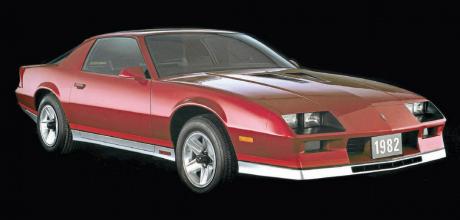Looks back to 1982
Remembering the rebirth.Evans looks back to 1982, a time that wasn’t all that different from today…
It’s sometimes amazing just how quickly time passes. I look at the subject of this month’s Across the Pond as an example. The year 1982 doesn’t seem that long ago to me, but four decades have passed since then. And in the world of American motoring a lot has changed. Forty years ago, nobody had heard of crossover utilities, Teslas, advanced driver assist systems, or autonomous driving, which from a certain perspective probably isn’t a bad thing. When we look back at 1982 from a classic American car perspective some things do stand out. This year represents both the final days of the so-called smog era, where many Detroit cars were emasculated under a plethora of emissions hoses, electronic feedback carburettors, restrictive exhaust systems and tall gearing, but it also represented the first fruits of a rebirth. By the summer of that year, there were signs that the American auto industry was re-emerging from one of its darkest periods and when the 1983 models debuted later that year there was cause for celebration.
Key examples of course were the pony cars. At General Motors, the Chevrolet Camaro and Pontiac Firebird were newly redesigned for 1982 with sharp looks and by the standards of the time, world-class handling. Over at Ford, the Euro-inspired era had begun, with international influence being felt through the corridors of Dearborn. The smart, sensible Fox platform cars were proliferating in numbers, led by the Mustang, which for 1982 got a major shot of oats thanks to its reborn 302cu in (5.0-litre) High Output V8.
Although its 157 net horsepower rating might not seem like much today, we need to remember that in early Eighties America, this was a big deal in a factory car. The fact that the Fox chassis Mustang was also light didn’t go unnoticed. Back in the day, Motor Trend clocked its 1982 Mustang GT test car at 6.9 seconds in the 0-60mph dash, which still isn’t too shabby, all things considered. At Chrysler meanwhile, the humble K-car twins, the Dodge Aries and Plymouth Reliant were helping revive fortunes at Highland Park, leading to a whole host of derivative models including some of the first factory Detroit convertibles since the mid-Seventies.
By the following year, things were really starting to look up. The early Eighties recession was starting to fade into memory, fuel prices were stabilising and an increasing assortment of exciting and dynamic cars could be found in American showrooms. The 1984 Chevrolet Corvette (released in ’83) was a prime example, along with pony cars that were now pushing the magic 200 horsepower mark from their factory V8s. Ford’s swoopy new ’83 Thunderbird redefined the personal luxury segment, while at Chrysler a revolution was under way with the launch of the 1984 model year T-wagons (better known as the pioneering Dodge Caravan and Plymouth Voyager minivans).
As the decade wore on, we’d see even more exciting and powerful cars emerge from the Motor City, creating a legacy that spans to this very day. And while here in 2022, the world faces economic uncertainty and the auto industry seems unsure about its future, perhaps it’s time to reflect back to 1982 and learn a few history lessons. Back then fear and uncertainty was running rampant, much as they are today.
The world felt as if it was on the cusp of nuclear conflict, with tensions between the USSR and NATO at their highest since the early Sixties and many economies were also grappling with high inflation and unstable energy prices. In the US, the worst recession since the Thirties took hold during the early Eighties, with unemployment running at close to 11%. Yet as we saw with the nation’s automotive industry during this period, things would turn around. Inflation was tamed, unemployment fell, fuel prices stabilised and East-West relations thawed. Things got better, and I’m sure they will do the same again, 40 years later…


